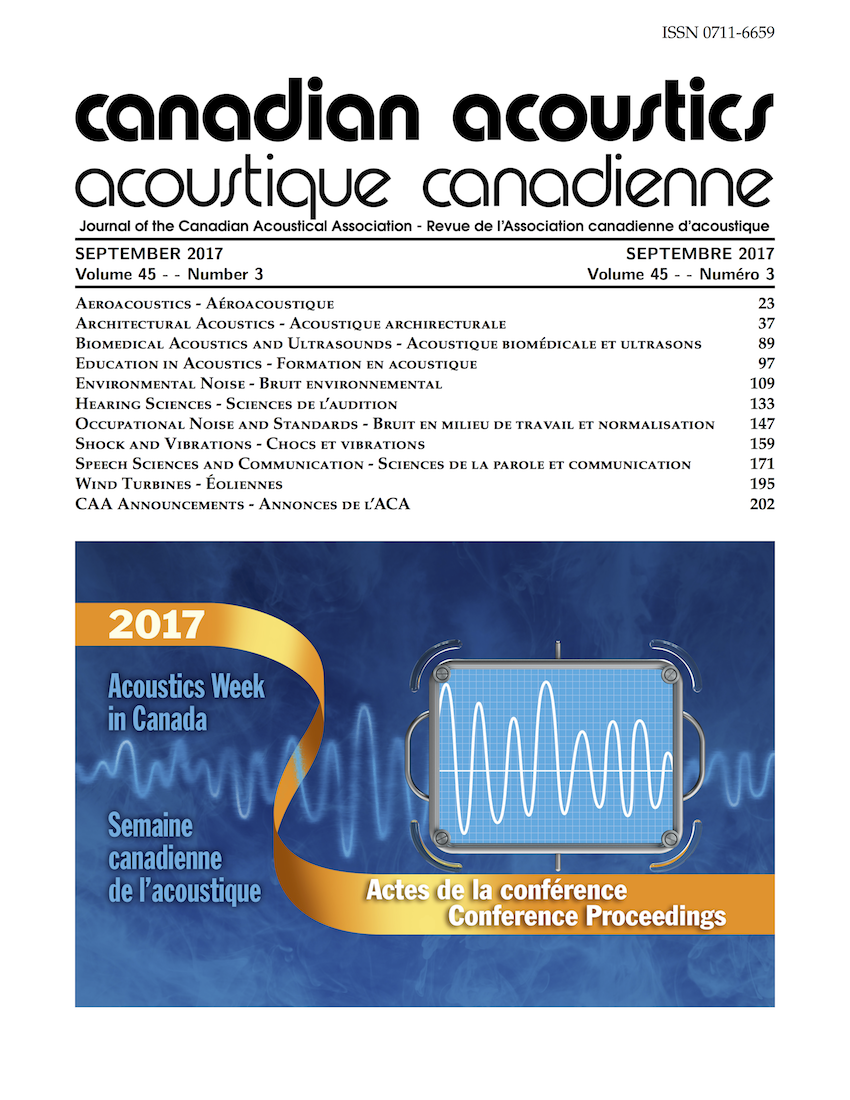ACOUSTIC PERFORMANCE OF STUDY ROOMS - A CASE STUDY
Abstract
A new building at an academic institution was built for the purpose of providing students with needed space for individual and group study. The building had quickly turned into a preferred space and is often heavily occupied. The study rooms are equipped with televisions and the walls are coated with a whiteboard layer, so that both conversations/presentations can be undertaken in addition to silent study. There have been numerous complaints from users of the study rooms about the disturbances from the TV and those speaking in adjacent rooms. Students noticed that conversations were easily audible, even when speaking at normal levels. Two pairs of unoccupied study rooms were used to conduct tests and evaluate their acoustical performance. The Apparent Sound Transmission Class (ASTC) and Articulation Index (AI) ratings were calculated to determine if the study rooms are acceptable for students requiring a quiet workspace, while having their conversations kept private. The results of the study will be presented in this paper.
Keywords: Apparent Sound Transmission Class (ASTC); Articulation Index (AI); group study room; school; speech privacy
Additional Files
Published
How to Cite
Issue
Section
License
Author Licensing Addendum
This Licensing Addendum ("Addendum") is entered into between the undersigned Author(s) and Canadian Acoustics journal published by the Canadian Acoustical Association (hereinafter referred to as the "Publisher"). The Author(s) and the Publisher agree as follows:
-
Retained Rights: The Author(s) retain(s) the following rights:
- The right to reproduce, distribute, and publicly display the Work on the Author's personal website or the website of the Author's institution.
- The right to use the Work in the Author's teaching activities and presentations.
- The right to include the Work in a compilation for the Author's personal use, not for sale.
-
Grant of License: The Author(s) grant(s) to the Publisher a worldwide exclusive license to publish, reproduce, distribute, and display the Work in Canadian Acoustics and any other formats and media deemed appropriate by the Publisher.
-
Attribution: The Publisher agrees to include proper attribution to the Author(s) in all publications and reproductions of the Work.
-
No Conflict: This Addendum is intended to be in harmony with, and not in conflict with, the terms and conditions of the original agreement entered into between the Author(s) and the Publisher.
-
Copyright Clause: Copyright on articles is held by the Author(s). The corresponding Author has the right to grant on behalf of all Authors and does grant on behalf of all Authors, a worldwide exclusive license to the Publisher and its licensees in perpetuity, in all forms, formats, and media (whether known now or created in the future), including but not limited to the rights to publish, reproduce, distribute, display, store, translate, create adaptations, reprints, include within collections, and create summaries, extracts, and/or abstracts of the Contribution.


